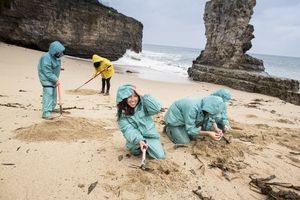Classrooms in the wild

Science built on experiential learning in wilderness habitats in the UC Natural Reserves is thriving at UC Santa Cruz. New private support is bolstering that research—making it available to more students from a wider range of backgrounds than ever before. On the horizon: a planned gift of a large parcel in San Benito County that will become a new UC Natural Reserve overseen by UC Santa Cruz. Currently four coastal reserves stretching from Año Nuevo to Big Creek and the Campus Reserve are using expanded resources and outreach to inspire interest in conservation and science career paths. A new presidential chair held by the director of the reserves supports facilities and hands-on experiences open to all majors. Pioneering marine mammal researcher Ken Norris helped establish the reserves and led the first expeditions to practice observation in them—the resulting Natural History Field Quarter has become a beloved rite within the Environmental Studies Department. The course now has permanent funding, thanks to an endowment from the David and Lucile Packard Foundation. An additional gift is helping showcase UC Santa Cruz’s 130,000 insect, plant, and fungus specimens and taxidermied birds and mammals. The collection enables research and education in disciplines ranging from art to biology, and together with the field quarter, has a new home in the Kenneth S. Norris Center for Natural History—named in honor of the person who started it all.
Key support provided by the Helen and Will Webster Foundation, the David and Lucile Packard Foundation, and an anonymous donor.